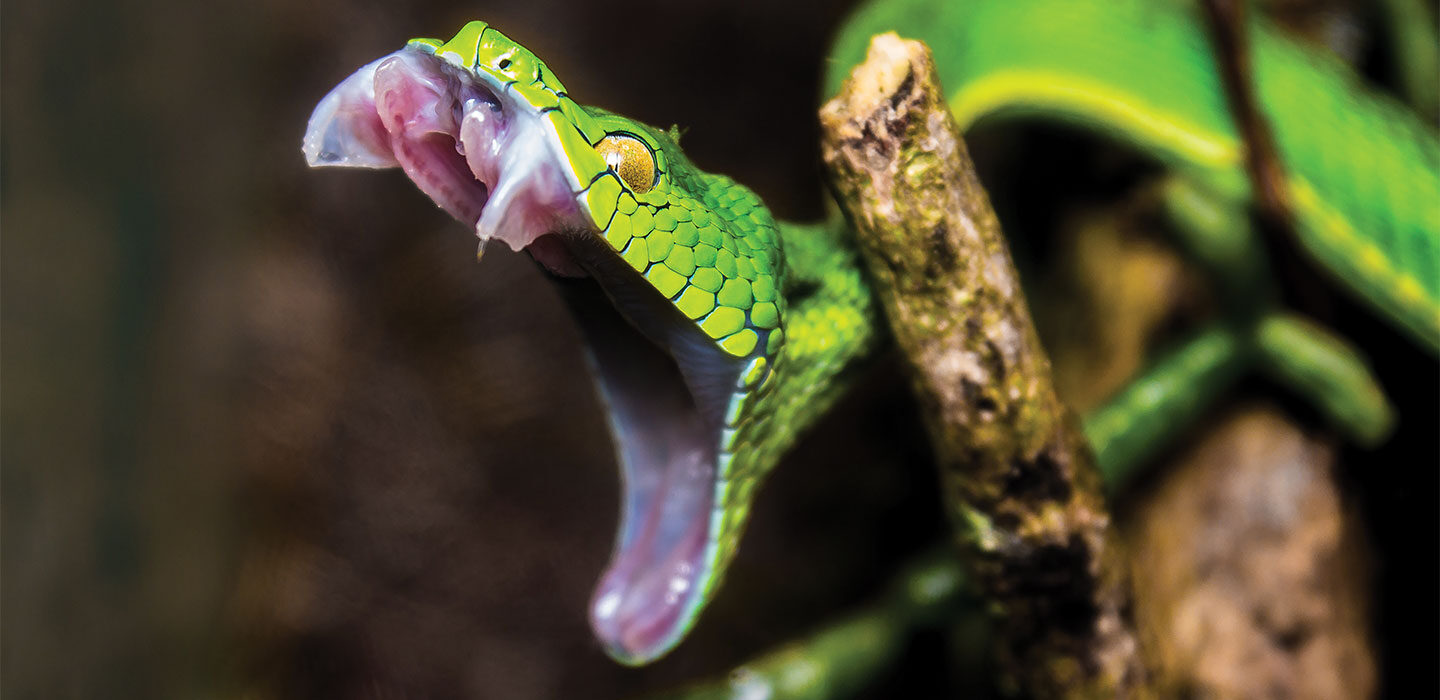Search This Blog
Pit Vipers The Optimal Blend of Style & Performance. Pit Vipers Outdoor Fashion and Lifestyle.
Featured
- Get link
- X
- Other Apps
The Severity of A Viper Bite

The severity of a viper bite depends on the species and if it was a wet or dry bite, which contains no venom. Savitzky pointed out that European vipers (adders) have relatively moderate venom that is not highly lethal, while Gaboon vipers, which are found in sub-Saharan Africa, have highly potent venom.
"Vipers in general tend to have enzymetic venom that affects general tissues," Savitzky said. It causes intense swelling, pain and necrosis, which is cell death and decay. It also functions as an anticoagulant. Death usually occurs from a dramatic collapse in blood pressure. All viper bites should be treated seriously and medical attention should be paid.
In addition to killing prey and injuring predators, viper venom helps vipers digest their food, according to Sfetcu. Since they swallow their prey whole, digesting it is a big job not helped by vipers' generally inefficient digestive systems. The venom breaks down lipids, acids and proteins in the prey during the digestive process.
Symptoms of a pit viper snakebite usually appear within a few minutes to a few hours after a bite and may include:
- Severe, immediate pain with rapid swelling.
- Bruising of the skin.
- Trouble breathing.
- Changes in heart rate or rhythm.
- A metallic, rubbery, or minty taste in the mouth.
- Numbness or tingling around the mouth, tongue, scalp, feet, or the bite area.
- Swelling in lymph nodes near the bite.
- Signs of shock.
Other symptoms may be caused by the bite itself or from fear or worry after being bitten. You may:
- Feel very worried or confused.
- Faint or feel like you might faint.
- Sweat and have chills.
- Be sick to your stomach or vomit.
- Feel weak or dizzy.
The severity of symptoms will depend on the type of snake that bit you, how much venom was injected with the bite (envenomation), and your personal health risks. Even if you do not have symptoms within 8 hours of a bite, continue to watch for symptoms for up to 2 weeks.
If you do not have symptoms within 8 to 12 hours, the snake might not have injected any venom; this is called a dry bite. At least 25%, perhaps up to 50%, of bites are dry.
- Dry bites or bites where only a very small amount of venom is injected may cause slight bleeding, pain, and swelling at the bite injury.
- If a moderate amount of venom was injected, you are more likely to have severe pain, swelling of the whole limb, and general ill feelings, such as nausea, vomiting, and weakness. Swelling of the whole limb is an effect of the venom and can cause compartment syndrome. This is rare.
- Large amounts of venom usually cause severe pain and severe swelling. You may have trouble breathing, moderate to severe bleeding, and signs of shock after this type of bite.
If venom is injected, about 35% are mild envenomations, 25% are moderate envenomations, and 10% to 15% are severe.
It is important to remember that a snake only injects part of its venom with each bite, so it can still hurt you after the first strike. A dead snake, even one with a severed head, can bite and release venom through reflexes for up to 90 minutes after it dies.
Prior to the paper published in June 2017 Annals of Emergency Medicine by Gerardo, et al, mild to moderate copperhead (Agkistrodon contortrix) bites were managed symptomatically with pain medication with some patients receiving FabAV. The most common sign and symptom from these bites were pain and swelling. Rarely would copperhead bites cause fatalities and hematologic issues. However, some copperhead bites cause permanent tissue loss and disability. This multicenter, randomized, double-blind, placebo controlled study involved the treatment of 74 patients with 45 receiving FabAV and 29 placebo. They used the Patient Specific Functional Scale (PSFS) at 14 days after copperhead envenomation to evaluate limb function. PSFS is used to quantify activity limitation and functional outcomes in a variety of musculoskeletal problems. Treatment with FabAV reduced limb disability at 14 days (8.6 for FabAV and 7.4 for placebo). Other retrospective studies have also found FabAV may improve limb function. Essentially this means patients may recover quicker. Another significant finding was opioid analgesia use was less in those treated with FabAV.
Successful treatment of Pit Viper envenomation whether severe or minor may be managed with the help of your local expert or regional poison control center. As with any intervention the risk and benefits as well as cost must be considered and discussed with the patient. Victims should be reminded that tissue damaged by venom is irreversible and disability from envenomation may impair limb function, cause disfigurement, persistent symptoms such as numbness, pain and paresthesia despite receiving antivenom.
Popular Posts
What is Eastern Diamondback Rattlesnake?
- Get link
- X
- Other Apps
Himalayan Pit Viper-Gloydius Himalayanus
- Get link
- X
- Other Apps
Comments
Post a Comment